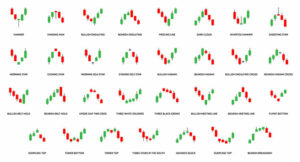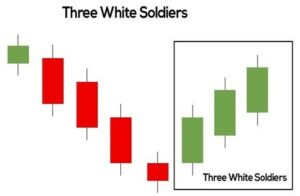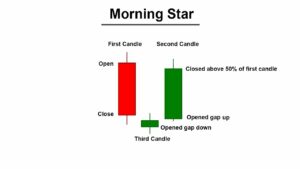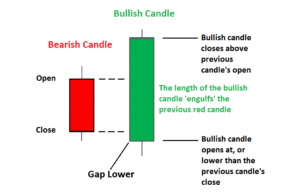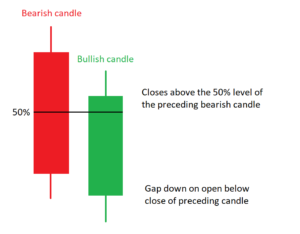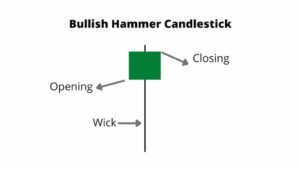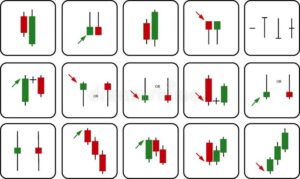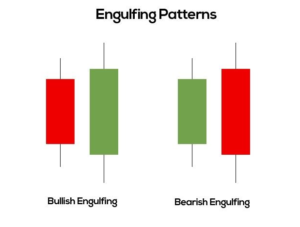A Guide to Bullish Candlestick Patterns
A Guide to Bullish Candlestick Patterns
If you want to start being a consistent and profitable trader, knowing what Candlestick patterns are all about is very important. As far as technical analysis is concerned, candlestick charts are some of the best tools that you have at your disposal. These candlestick patterns are ideal for helping you to identify trends and trend reversals in the market.
What we are here to look at today are very bullish candlestick patterns, and what they mean. In case you didn’t know, candlestick patterns usually form at the end of a trend, and they generally signify the beginning of a new trend. candlestick patterns are formed when one, 2, or more candlesticks form a certain pattern. Even a single candlestick can sometimes be an indication of what is to come.
As far as identifying trend reversals go, being able to read a variety of Candlestick patterns is extremely important period today, we want to look at bullish candlestick patterns, which usually form at the end of a downtrend, and signify that an uptrend is going to happen. Let’s take a closer look at how to read Candlestick charts, as well as what some of the most common bullish candlestick patterns are.
How to Read a Candlestick Chart
Candlestick patterns have been used in the western world for trading for well over 100 years at this point, and for good reason. This is in part because they provide you with various pieces of information about a security.
For instance, the four things that a candlestick tells you is what the closing price and the opening price was at, as well as what the highest price and the lowest price traded at was during a day.
In terms of the anatomy of the candlestick, that large or rectangular part is known as the body or the real body of the candle. This indicates the link between the opening price and the closing price for a given day. This body also shows you what the price range is between the opening price and the closing price for any given day.
If you see that the real body of the candle is black, filled in, or red, it indicates that the opening price is higher than the closing price, and this is what is generally known as a bearish candle. It indicates that the price opened high, but the bears then pushed the price down, causing the price to close lower than the opening price.
On the other hand, if you see that the real body of the candle is empty, white, or green, it means that the opening price was lower than the closing price. This is what is known as a bullish candle. This is a strong indication that the price opened, with the bulls then pushing the price upwards, which caused it to close at a higher level than it opened.
Those thin and vertical lines that you see both above and below the real body of a candle is what is known as the Wick or the shadow. This tells you what the lowest and the highest prices for an asset was during a given day. Bullish candles represent strength and they are always green.
5 Bullish Candlestick Patterns for You To Know
What we want to do right now is to take a closer look at the five most common bullish candlestick patterns that you need to be aware of.
CLICK BELOW TO JOIN INCOME MENTOR BOX AND START MAKING REAL PROFITS!
Three White Soldiers
The three white soldiers Candlestick pattern consists of three long bullish candles. These do not have long shadows, or any shadows at all. Each candle opens at least halfway above the open of the previous candle. This is a bullish candlestick pattern that forms at the end of a downtrend and it indicates that a bullish reversal is in the works.
The Morning Star
Another common bullish candlestick pattern that forms at the end of a downtrend is the Morningstar. The Morningstar also consists of three separate candlesticks. The first candlestick is a bearish candle, the second one is a doji candle, and the third is a bullish candle.
The first candle indicates a continuation of a downtrend, the second candle shows indecision in the market, and the third candle is a bullish one that indicates that the bulls are back in power. Keep in mind that the second candle should be completely below both the first and the third candles.
Bullish Engulfing
One of the most common bullish candlestick patterns out there is known as bullish engulfing. This is a candlestick pattern that forms at the end of a downtrend and indicates that there is a bullish reversal happening.
This particular pattern consists of two candles, with the second candle completely engulfing the first candle. The first of the two candles is bearish, and it indicates a continuation of a downtrend, but the second candle is a much longer and larger bullish candle that completely engulfs the first one, and signifies that the bulls are back in power.
The Piercing Pattern
The 4th bullish candlestick pattern that we want to take a look at is known as the piercing pattern, and it’s also another one that forms at the end of the downtrend. This particular candlestick pattern consists of two separate candles, with the first one being a bearish candle that it signifies a continuation of a downtrend. However, the second candle is a bullish candle, with the gap down closing more than 50% of the real body. This is another strong indication that the bulls are back in power.
The Hammer
The 5th and final bullish candlestick pattern that we want to take a quick look at is known as the hammer. The real body of this candle is very small and is at the top with a lower shadow that should be more than twice the length of the real body.
It also has absolutely no or a very little upper shadow. Here, you can see how the prices open and the sellers then pushed the price down, but the buyers then came back into the market and pushed the price back up, with the result being that the price closed higher than it opened.
Bullish Candles – The Bottom Line
The bottom line here is that if you could read candlestick patterns, then you’re one step closer to being your consistent and profitable trader. Today, we’ve covered bullish candlestick patterns, but stay tuned, because we will also be covering bearish candlestick patterns.
CLICK BELOW TO JOIN STOCK TRADING MENTOR BOX
For more trading tips, strategies, methods, and everything in between, check out Andrew’s Trading Channel. Here you will find the world’s best stock market trading school, a trusted day trading school, state of the art indicators and trading tools, Forex and crypto signals groups, and more!

